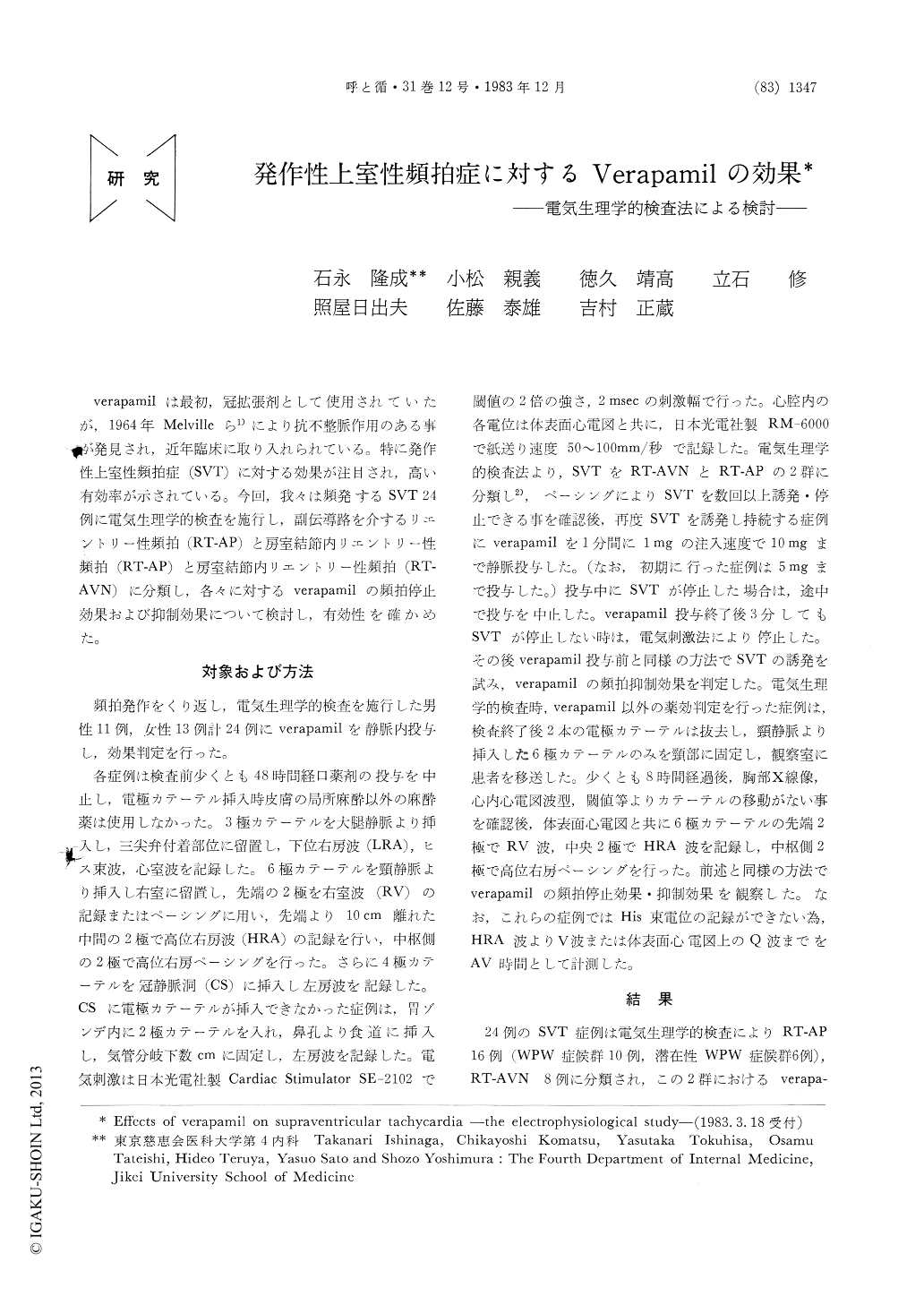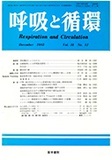Japanese
English
- 有料閲覧
- Abstract 文献概要
- 1ページ目 Look Inside
verapamilは最初,冠拡張剤として使用されていたが,1964年Melvilleら1)により抗不整脈作用のある事が発見され,近年臨床に取り入れられている。特に発作性上室性頻拍症(SVT)に対する効果が注目され,高い有効率が示されている。今回,我々は頻発するSVT 24例に電気生理学的検査を施行し,副伝導路を介するリエントリー性頻拍(RT-AP)と房室結節内リエントリー性頻拍(RT-AP)と房室結節内リエントリー性頻拍(RT—AVN)に分類し,各々に対するverapamilの頻拍停止効果および抑制効果について検討し,有効性を確かめた。
Verapamil (5-10 mg) intravenously, was administered to 24 patients with paroxysmal supraventricular tachycardia (SVT) undergoing electrophysiological study. Sixteen patients were diagnosed as the reciprocating tachycardia due to re-entry using an accessory atrioventricular (AV) pathway (RT-AP) (ten patients with Wolff-Parkinson-White (WPW) syndrome and six patients with concealed WPW syndrome) and the remaining eight patients were diagnosed as the reciprocating tachycardia due to re-entry confined to the AV node (RT-AVN). Verapamil had a significant effect in delaying conduction in the AV node during sinus rhythm. In 16 patients with RT-AP, sustained SVT was initiated in 14 patients by the extra-stimulus technique, and was terminated by verapamil in nine patients (64%). All but one were terminated by AH or AV block in the AV node. Ventricular premature contraction (VPC) was directly responsible for the termination of SVT in one patient. After verapamil injection, sustained SVT was not induced in 12 of the 16 patients (75%). Verapamil was effective in delaying conduction in the AV node during SVT, but the accessory AV pathway showed no significant change. In eight patients with RT-AVN, sustained SVT was initiated in 6 patients by the extrastimulus technique, and was terminated by verapamil in four patients (67%). In two patients, SVT was terminated by AV block, but in one patient with unusual type RT-AVN it was terminated by VA block. VPC terminated SVT in the remaining one patient. After verapamil injection, sustained SVT was not induced in five of the seven patients (71%). In four of the five patients, verapamil affected the slow pathway but in the remaining one patient it affected the fast pathway. Despite a potential of sinus node depression and the initiation of VPCs, verapamil had no significant side effect. It was concluded that the intravenous verapamil was effect-ive in terminating and preventing induction of SVT and the efficacy was almost the same in both RT-AP group and RT-AVN group.

Copyright © 1983, Igaku-Shoin Ltd. All rights reserved.


